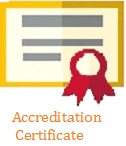Application of Lime and Adaptable Variety to Increase Tomato Productivity at Potential Acid Sulphate Soil
Abstract
High soil acidity is the most important problem that causes low tomato (Lycopersicum esculentum) productivityat potential acid sulphate soil. Soil quality improvement by using ameliorant, such as lime, and introducing adaptable variety are options to increase tomato productivity in the soils. Field experiment was conducted to evaluate the effect of lime and varieties of tomatoes to increase its productivity in a potential acid sulphate soil of Belandean, Barito Kuala District, South Kalimantan during dry season of 2011. The research was arranged in a split-plot design with three replicates. The main plots were two tomatoes varieties, i.e. Permata and Ratna, while sub plots were five levels of lime, i.e: 0, 0.5, 1.0, 1.5, and 2.0 t ha-1. The results showed that liming improved soil quality and tomato yield. It significantly increased soil pH and reduced soil Al-saturation, and increased soil exchangeable-Ca and Mg. It was assumed that due to pyrite oxidation, however, soil pH decreased and Al-saturation increased, while soil exchangeable- Ca and Mg decreased significantly at nine weeks after planting. Liming also increased plant growth and yield variables (plant height, size, number and weight of fruit, and fruit yield) for both varieties. The better variables of Permata variety at control treatment than those of Ratna variety indicated that the first variety was more adaptive than the other variety in potential acid sulphate soil.
Keywords: Adaptable variety, lime, potential acid sulphate soil, tomato.
Keywords
Full Text:
PDFDOI: http://dx.doi.org/10.5400/jts.2014.v19i2.59-66
Refbacks
- There are currently no refbacks.
INDEXING SITE
This work is licensed under a Creative Commons Attribution 4.0 International License.

















